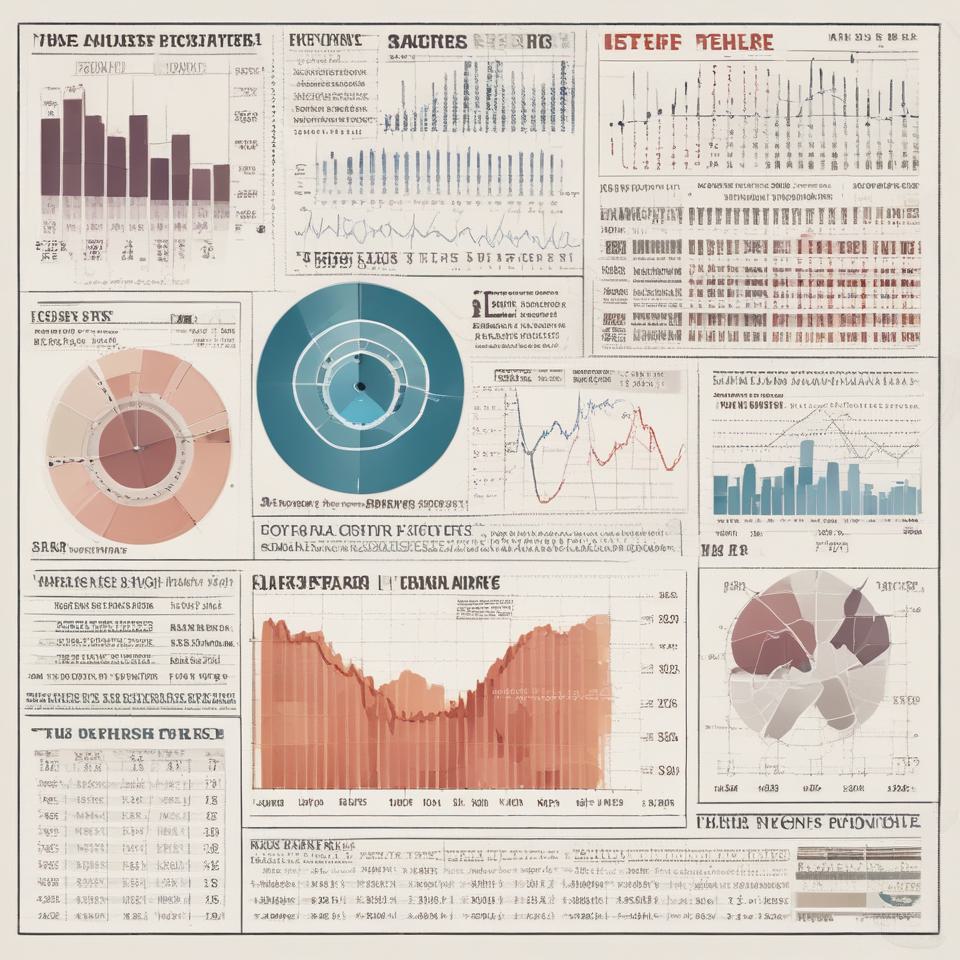
Economic indicators are critical data points that help investors gauge the health of an economy and make informed investment decisions. Understanding these indicators can provide insights into market trends, economic cycles, and potential investment opportunities. This guide covers key economic indicators that investors should monitor, explains their significance, and highlights how they can influence investment strategies.
1. Gross Domestic Product (GDP)
Definition: GDP measures the total value of all goods and services produced within a country over a specific period. It is a broad indicator of economic activity and health.
Types:
- Nominal GDP: Measures the value of output using current prices.
- Real GDP: Adjusts for inflation, providing a more accurate reflection of economic growth.
Significance:
- Economic Growth: A rising GDP indicates economic expansion, which can lead to higher corporate earnings and stock prices.
- Economic Health: A declining GDP signals economic contraction, which may lead to lower earnings and stock prices.
Investment Implications:
- Positive GDP Growth: Investors may favor stocks, especially in sectors that benefit from economic expansion like technology, consumer discretionary, and industrials.
- Negative GDP Growth: Investors might shift to defensive assets like bonds, utilities, and consumer staples to protect their portfolios.
2. Inflation Rate
Definition: Inflation measures the rate at which the general level of prices for goods and services rises, eroding purchasing power.
Common Measures:
- Consumer Price Index (CPI): Measures the average change in prices paid by consumers for goods and services.
- Producer Price Index (PPI): Measures the average change in selling prices received by domestic producers for their output.
Significance:
- Purchasing Power: High inflation reduces purchasing power, affecting consumer spending and corporate profits.
- Interest Rates: Central banks may raise interest rates to combat high inflation, impacting borrowing costs and investment returns.
Investment Implications:
- High Inflation: Investors might favor assets that traditionally perform well in inflationary environments, such as commodities, real estate, and inflation-protected securities (TIPS).
- Low Inflation: Equities and bonds may perform better as lower inflation supports consumer spending and borrowing.
3. Unemployment Rate
Definition: The unemployment rate measures the percentage of the labor force that is unemployed and actively seeking employment.
Significance:
- Economic Health: A low unemployment rate indicates a healthy economy with strong job growth, while a high unemployment rate signals economic distress.
- Consumer Spending: Employment levels influence consumer spending, which drives economic growth and corporate earnings.
Investment Implications:
- Low Unemployment: Investors may prefer cyclical stocks that benefit from increased consumer spending, such as retail, travel, and hospitality.
- High Unemployment: Defensive stocks, such as utilities and healthcare, may be more attractive as they provide stability during economic downturns.
4. Interest Rates
Definition: Interest rates represent the cost of borrowing money, set by central banks such as the Federal Reserve in the United States.
Types:
- Federal Funds Rate: The interest rate at which banks lend to each other overnight, influenced by the central bank.
- Long-Term Interest Rates: Rates on longer-term loans, such as mortgages and corporate bonds.
Significance:
- Borrowing Costs: Higher interest rates increase borrowing costs for consumers and businesses, potentially slowing economic growth.
- Investment Returns: Interest rates affect the returns on various asset classes, including bonds, stocks, and real estate.
Investment Implications:
- Rising Interest Rates: Bonds and interest-sensitive sectors like utilities and real estate may underperform. Investors might shift towards financial stocks that benefit from higher rates.
- Falling Interest Rates: Bonds and high-dividend stocks become more attractive, while growth stocks benefit from lower borrowing costs.
5. Consumer Confidence Index (CCI)
Definition: The CCI measures the degree of optimism that consumers feel about the overall state of the economy and their personal financial situations.
Significance:
- Consumer Spending: High consumer confidence typically leads to increased spending, boosting economic growth and corporate profits.
- Economic Outlook: Low consumer confidence may indicate economic uncertainty and potential slowdowns.
Investment Implications:
- High Consumer Confidence: Investors might favor sectors reliant on consumer spending, such as consumer discretionary and retail.
- Low Consumer Confidence: Defensive sectors like consumer staples and utilities may perform better as consumers cut back on discretionary spending.
6. Industrial Production Index
Definition: The Industrial Production Index measures the output of the industrial sector, including manufacturing, mining, and utilities.
Significance:
- Economic Activity: A rising index indicates increased industrial activity and economic growth, while a declining index suggests a slowdown.
- Corporate Earnings: Industrial production data can provide insights into corporate earnings, especially in the manufacturing and energy sectors.
Investment Implications:
- Increasing Industrial Production: Investors might favor industrial and energy stocks that benefit from higher production levels.
- Decreasing Industrial Production: Defensive stocks and sectors less tied to industrial output, such as healthcare and consumer staples, may be more attractive.
7. Balance of Trade
Definition: The balance of trade measures the difference between a country’s exports and imports of goods and services.
Types:
- Trade Surplus: Occurs when exports exceed imports.
- Trade Deficit: Occurs when imports exceed exports.
Significance:
- Economic Health: A trade surplus can indicate a strong economy, while a trade deficit may signal economic challenges.
- Currency Value: Trade balances affect currency values, influencing import and export prices.
Investment Implications:
- Trade Surplus: Investors might favor domestic companies that benefit from strong exports.
- Trade Deficit: Sectors reliant on imports may face challenges, but investors might find opportunities in companies that can capitalize on cheaper foreign goods.
8. Housing Starts
Definition: Housing starts measure the number of new residential construction projects begun in a given period.
Significance:
- Economic Activity: Rising housing starts indicate economic growth and consumer confidence, while declining starts may signal economic slowdown.
- Related Sectors: Housing starts impact related sectors, such as construction, real estate, and home improvement.
Investment Implications:
- Increasing Housing Starts: Investors might favor stocks in the construction, real estate, and home improvement sectors.
- Decreasing Housing Starts: Defensive sectors and companies less tied to housing activity may be more attractive.
Conclusion
Understanding and monitoring economic indicators is crucial for investors to make informed decisions. These indicators provide insights into economic health, market trends, and potential investment opportunities. By analyzing GDP, inflation rates, unemployment rates, interest rates, consumer confidence, industrial production, the balance of trade, and housing starts, investors can develop strategies that align with current and future economic conditions. Effective use of economic indicators can enhance portfolio performance and risk management.
FAQs
- What is GDP and why is it important? GDP measures the total value of goods and services produced in a country. It’s important because it indicates economic growth and overall economic health.
- How does inflation impact investments? Inflation erodes purchasing power and can influence interest rates. High inflation may lead investors to favor assets like commodities and real estate.
- What does the unemployment rate indicate? The unemployment rate measures the percentage of the labor force that is unemployed. Low rates suggest economic strength, while high rates indicate economic distress.
- Why are interest rates crucial for investors? Interest rates affect borrowing costs and investment returns. Rising rates can hinder economic growth, while falling rates can stimulate spending and investment.
- How does consumer confidence affect the stock market? High consumer confidence boosts consumer spending, benefiting sectors like retail and consumer discretionary. Low confidence may lead to increased investment in defensive stocks.
- What does the Industrial Production Index tell investors? It measures the output of the industrial sector. Rising production signals economic growth, while declining production may indicate a slowdown.
- Why is the balance of trade important? It measures the difference between exports and imports. A trade surplus indicates strong exports, while a deficit may suggest economic challenges.
- What are housing starts and their significance? Housing starts measure new residential construction projects. Rising starts indicate economic growth, while declining starts may signal a slowdown.
- How can investors use economic indicators? Investors use economic indicators to gauge economic health, predict market trends, and inform investment strategies to optimize returns and manage risk.
- What are defensive stocks and when should investors consider them? Defensive stocks are in sectors like utilities and consumer staples that provide stability during economic downturns. Investors consider them during periods of economic uncertainty or high market volatility.


